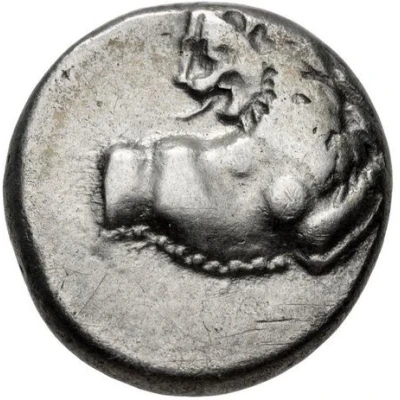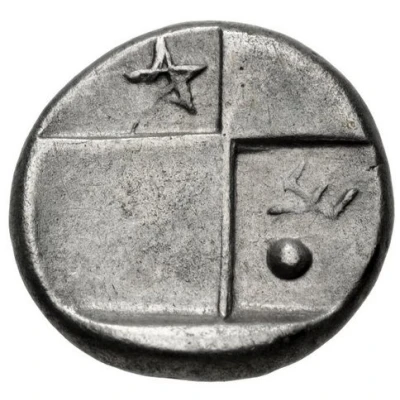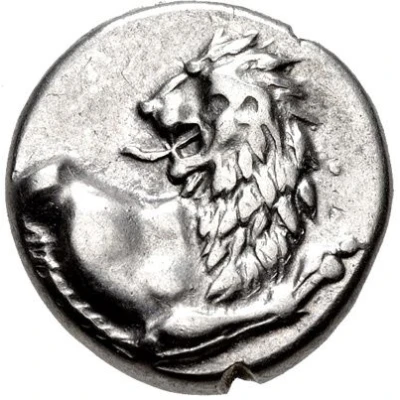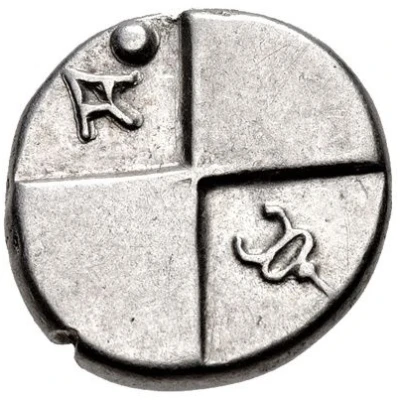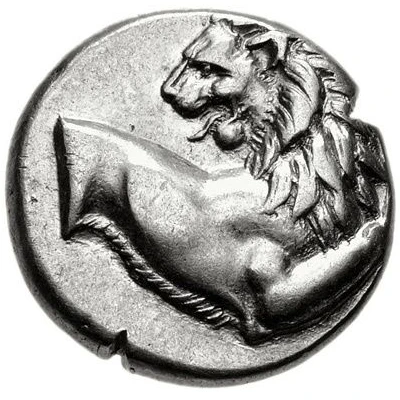
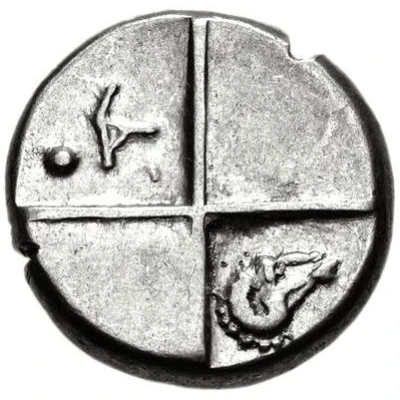

© Classical Numismatic Group, Inc.
Hemidrachm 386 BC - 338 BC
| Silver | 2.31 g | 13 mm |
| Issuer | Cherronesos (Thrace) |
|---|---|
| Type | Standard circulation coin |
| Years | 386 BC - 338 BC |
| Value | Hemidrachm (½) |
| Currency | Drachm |
| Composition | Silver |
| Weight | 2.31 g |
| Diameter | 13 mm |
| Shape | Round (irregular) |
| Technique | Hammered, Incuse |
| Demonetized | Yes |
| Updated | 2024-10-10 |
| Numista | N#427151 |
|---|---|
| Rarity index | 100% |
Reverse
Quadripartite incuse square with alternating raised and sunken quarters; pellet to the left of AΓ monogram and ram’s head right in opposite sunken quarters.
Comment
BMC –; McClean –; SNG Copenhagen –.
Interesting fact
The Hemidrachm coin from Cherronesos (Thrace) was used as a form of currency in ancient Greece, specifically in the region of Thrace. It was made of silver and weighed approximately 2.31 grams. Despite its small size, this coin held significant value in ancient times, with one Hemidrachm being equivalent to half a drachma, which was a standard unit of currency in ancient Greece. It's fascinating to think about how a small, seemingly insignificant coin like the Hemidrachm could have played a role in the economic transactions and daily lives of people living in ancient Greece. The fact that it was made of silver also highlights the importance of this precious metal in ancient times, both as a medium of exchange and as a symbol of wealth and value.
